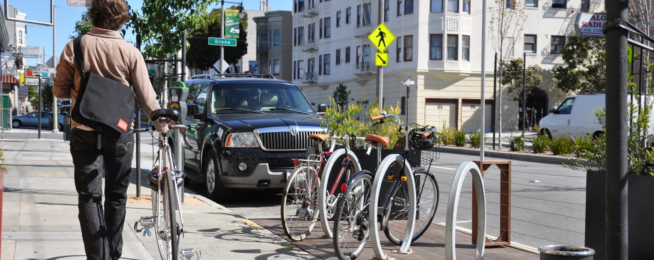As we begin to examine the lasting impacts of the pandemic, transport researchers are suggesting that prioritising active transport may be the key to ensuring positive health and wellbeing moving forward.
The unprecedented measures in restricting travel and social activity to contain the spread of the COVID-19 virus has seen many of our daily activities taking on new forms: working from home, e-learning, online shopping, and live-streamed public events.
As people familiarise themselves with these aspects of a more isolated lifestyle, there is considerable uncertainty regarding how these behaviours may also impact our transport demand.
Dr Jonas De Vos of University College London recently published a paper suggesting that now is a critical time to reassess our transport landscape and how we can adapt to a society where long term social distancing may be a reality.
While we know that a residual avoidance of social contact will change the transport landscape—with less people on public transport and engaging in out-of-home activities—De Vos highlights a key concerns of this more socially distant lifestyle in the potential negative impact on health and wellbeing.
As many people traditional maintain physical activity out of the home, there is concern that the virus-related health benefits of social distancing and isolation may negatively affect our overall physical health outcomes.
De Vos suggests that prioritising active transport, such as walking and cycling, may be the answers to maintain long term social distancing whilst ensuring positive health and wellbeing into the future.
The author recommends that policymakers need to shift their focus towards forms of transport and urban space planning that strengthen physical and mental health outcomes.
"Recreational walking and cycling might play an important role in maintaining well-being levels, but also in maintaining physical activity levels.
"Policymakers and transport planners can try to stimulate walking and cycling by (temporarily) allocating less-used street space to cyclists and pedestrians, especially at places that were previously affected by traffic congestion and did not have adequate walking and cycling infrastructure.
"Additionally, restricting cars from certain local streets, placing additional (pop-up) cycling parking, and reducing waiting time for pedestrians to cross roads might be easy, cheap and fast ways to stimulate active travel."
With local, state and national governments working hard to create the best possible post-COVID environment, Bicycle Network believe that enhancing Australian cities with active travel infrastructure that is safe and accessible may encourage forms of physical activity that are critical to maintaining a healthy and happy society.
Parklets and pop-up spaces for active transport may also offer a chance to encourage social cohesion and revitalise the ‘liveability’ that our cities are famous for.
These changes may be the necessary adaptations for a new type of living, one that offers a range of positive outcomes for Australians.
Read the paper published in Transportation Research Interdisciplinary Perspectives journal here.
See Bicycle Network’s submission Saving Victorian businesses with placemaking here.
Become our friend
Find out more about Bicycle Network and support us in making it easier for people to ride bikes.


